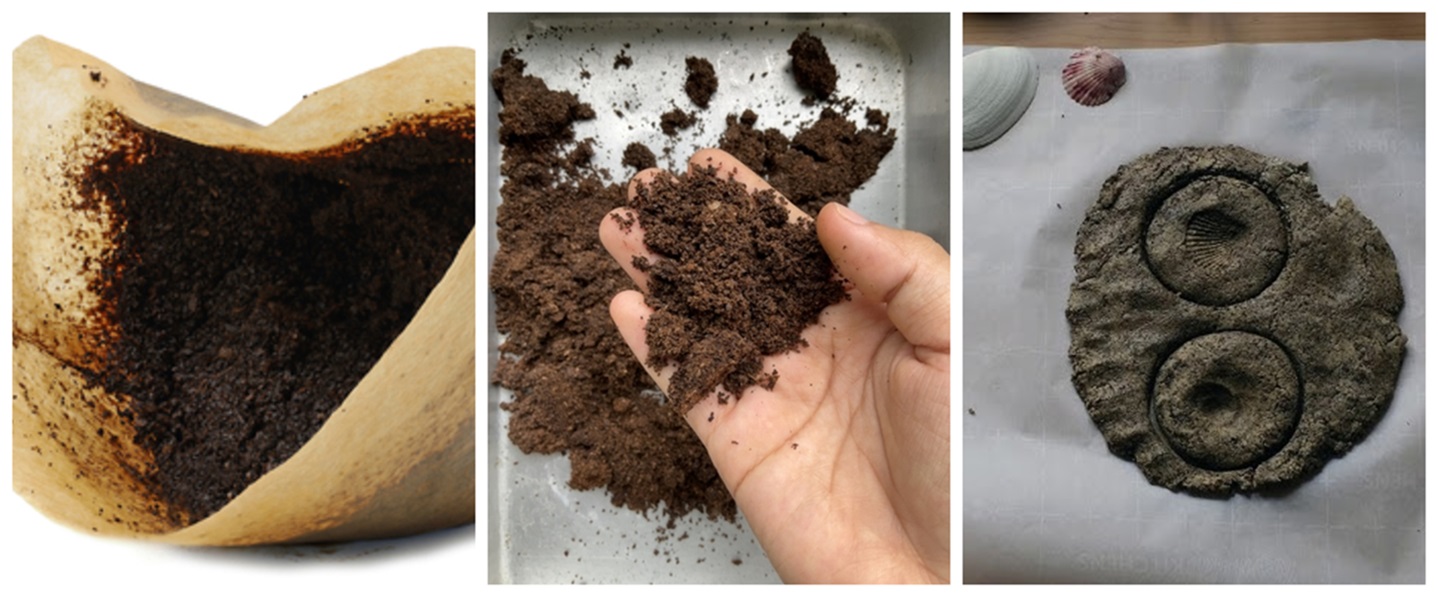Repurposing coffee grounds as a children’s activity is a great way to use an everyday item that would otherwise end up in the garbage. Coffee fossils are easy to make and great fun for children–more about that later. Many of us, however, already have other, chosen pet methods for reusing the gritty brown stuff known as coffee grounds–the sad leftovers of that sacrosanct morning cuppa. For example, I had always dumped the grounds on my compost pile. The grounds help aerate the compost and add nutrients. Yet once I had children, however, I stopped to reconsider whether I was missing out on teaching them an important lesson in repurposing and reusing household items.
Of course, not too long ago, we thought nothing of tossing out coffee grounds. Leftover coffee grounds are no longer good for brewing a steaming cup of brew. But teaching our children about the environment is about slowing down to reconsider before disposing of something for good. In the case of coffee, teaching children why and how old coffee grounds are good for a craft or the garden should definitely be part of the repurposing lessons we teach them.
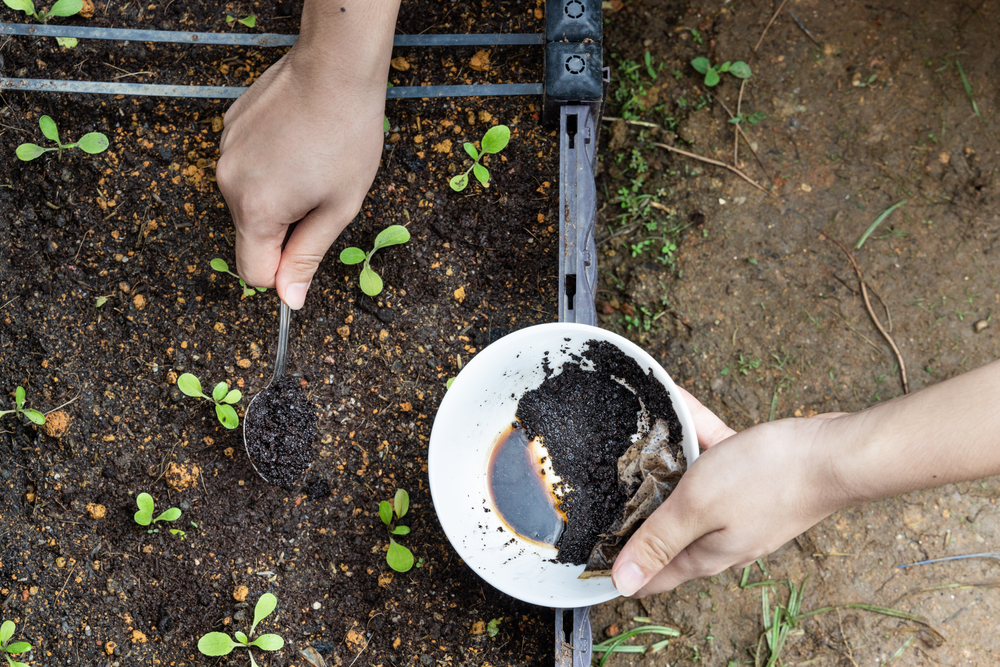
Parents can explain to their children that used coffee grounds are rich with nitrogen. The nitrogen found in coffee grounds can give a much-needed boost to acid-loving plants. Plants such as roses, rhododendrons, hydrangeas, camellias, azaleas, and tomatoes love coffee grounds. And children love to get involved and sprinkle them with the brown stuff that formerly helped you open your eyes that morning.
Ants, on the other hand, hate coffee grounds. An ant infestation in the garden can be easily cured by having your child apply some of those leftover grounds wherever they see signs of ants and poof. The ants will be gone. If you’ve got an ant problem in the garden, you’ve got a tailor-made opportunity to show children how something “used up” still has value.
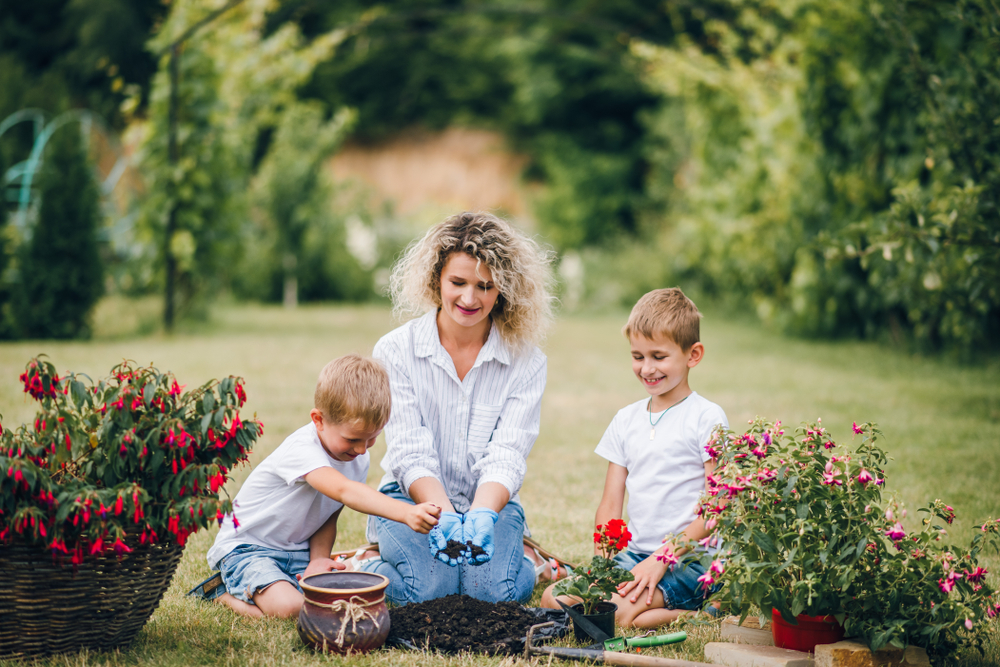
Gastropod Turnoff
Ants aren’t the only creatures that hate coffee. It’s hard to believe that anyone hates coffee, but yup. Many garden creatures do, including snails and slugs. So if you see those suckers in your garden, have your child toss some coffee grounds around your flowers and plants. Those nasty gastropods will find your garden a less-hospitable hangout.
Has your child noticed how the pesky neighbor’s cat enjoys lolling about in your treasured flower garden? Show your child how to mix coffee grounds with orange peels. Then have your child strew the mixture around the plants to use as a repellant against whatever plants you wish to protect. Kitty will go elsewhere to play. And you will have taught your child a valuable lesson about repurposing “garbage.”
Of course, one doesn’t have to leave home to repurpose coffee grounds. Got a fireplace? Hate kicking up those clouds of dust when you clean out the old ash? Show your child how to scatter the interior of the fireplace with damp coffee grounds before you begin. The grounds add bulk to the ashes and make for dustless sweeping.
All of these tips are great to know. They’re all easy ways to teach children how to give back to the earth for the bountiful gift of coffee. But part of being green is to always look for new ways to teach the next generation how to conserve and repurpose our earthly resources. What better way to give over that lesson than with a fun and easy craft like coffee ground fossils?
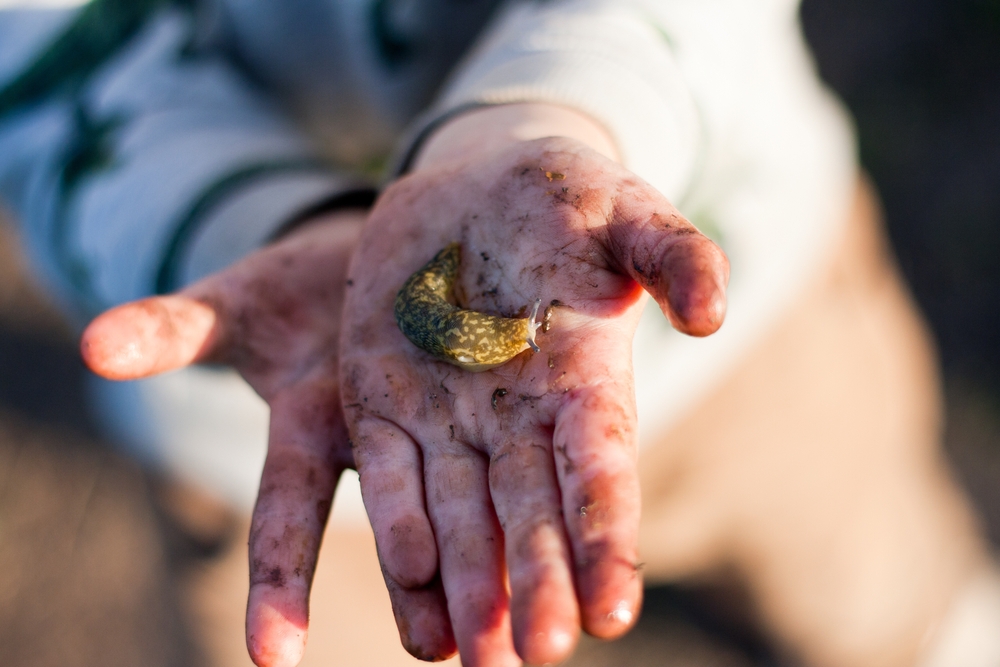
Giving Back
Using coffee grounds as the main ingredient in a fun craft is the perfect opportunity to give your child a tangible, hands-on lesson in repurposing and recycling used household items. In the case of coffee grounds, you can use them to create realistic coffee “fossils” with your children. Even a very young child can manage this craft.
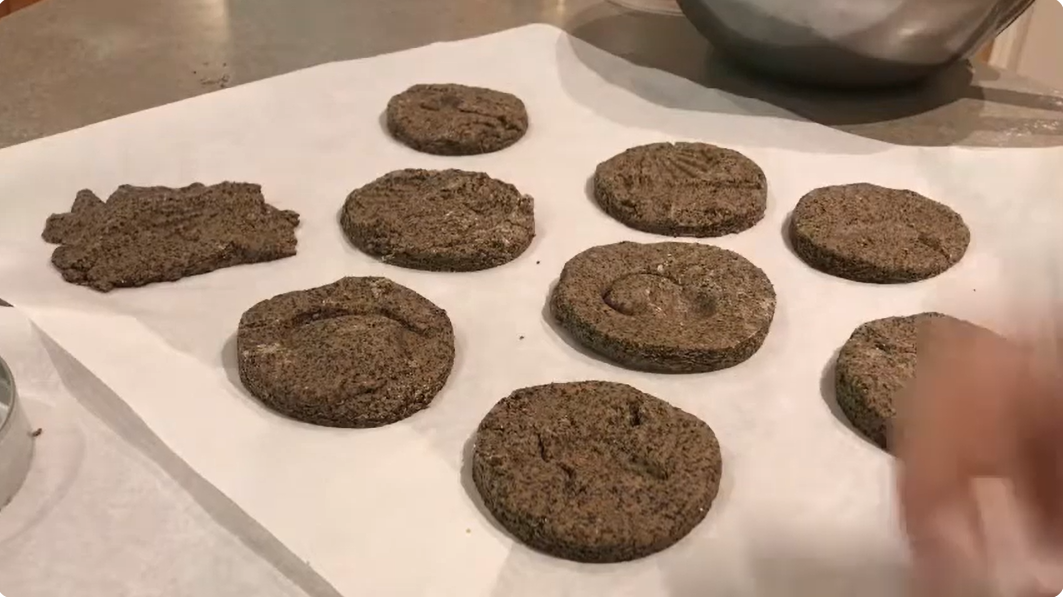
Here’s how:
Coffee Grounds Fossil Dough
Suitable from age 2 and up with some supervision
You’ll need:
- 1 cup used coffee grounds
- 1 cup flour
- ½ cup salt
- ½ cup cold coffee
- Mixing bowl
- Waxed paper
- Cookie cutters, cup, butter knife, toothpicks and other objects, such as seashells that can be used to make impressions in the dough
- String for hanging fossils (optional)
Directions:
- Mix the first four ingredients in the mixing bowl.
- Knead the dough, place it on the waxed paper, then pat the dough until it is flat
- Use the cup or butter knife to cut out dough circles that are just a bit larger than your cookie cutters.
- Press the cookie cutters into the dough to make the fossils. If you plan to hang your fossils, poke a hole into the top edge of each coffee ground fossil.
- Allow the fossils to dry overnight or up to two days. Once dry, have your child thread some string through each fossil hole to hang them for display
Note: Drying time can be shortened by baking the fossils for a short time.
